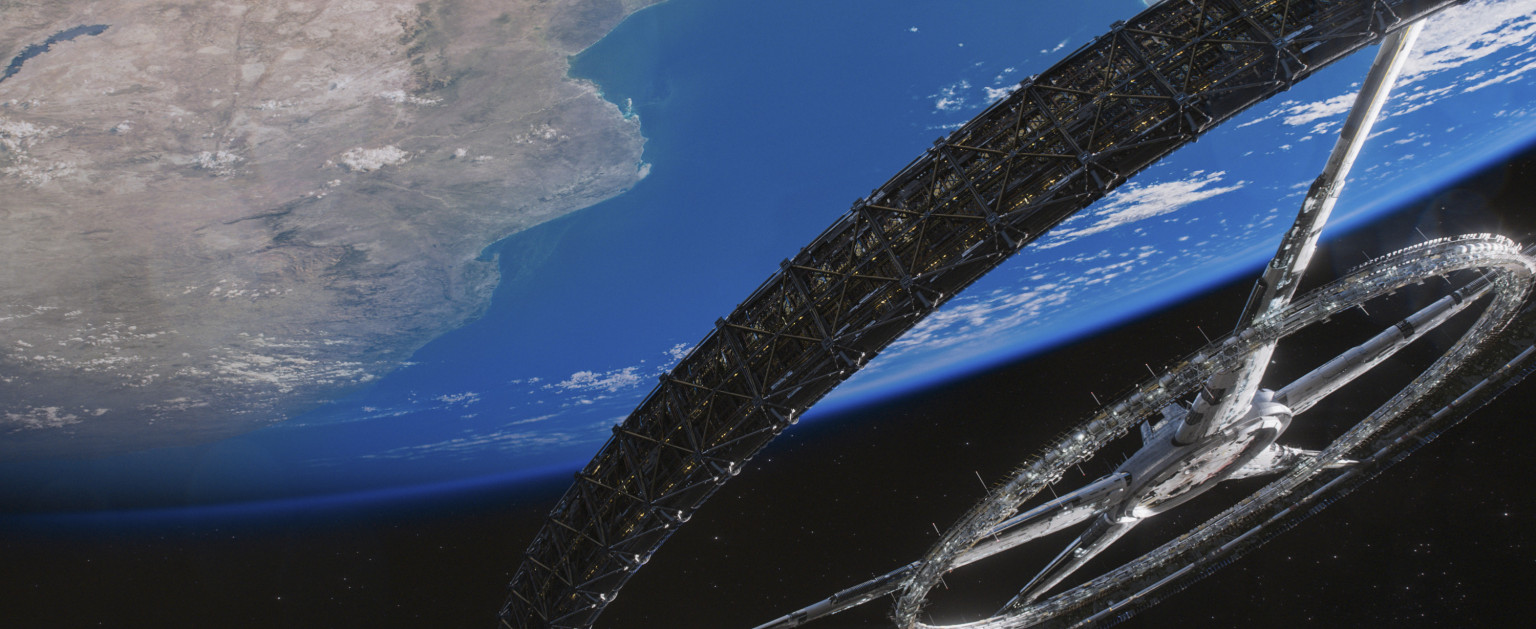Circular Motion: Building a Space Station with Artificial Gravity?
In the famous sci-fi movie Interstellar, the astronauts take the spinning spacecraft Endurance to travel through a wormhole and explore the exoplanets to save the people on Earth.
In another movie Elysium, the rich people of the world in 2154 are enjoying luxurious life on a huge spinning space station that orbits around Earth called Elysium while the average people are suffering on Earth.
Why, though, are these space stations in science fictions rotating? Well, as far as what scientists understand today about theoretical physics, centripetal acceleration is the only feasible way to simulate gravitational acceleration (you do not want to constantly accelerate a spacecraft linearly at 9.8m/s^2). In other words, these fictional space stations spin to create artificial gravity, and that is possible for human beings to build in the real world.
When we are in a car and the car turns, we always feel that we are being thrown out of the car. This is because we always want to move linearly but there is the centripetal acceleration (since the car is turning) that drags us to move in a circular path. The same can be applied to a space station. In a hypothesized spinning space station, a ring-shaped living area rotates about the center of the ring. People in the living area stand with their heads toward the center of the circle.
The speed the space station should spin is related to the radius of the ring. It can be calculated through formulas we are familiar with in class. Basically, the magnitude of the simulated acceleration, a, can be expressed by the following formula:
where a is the magnitude of acceleration, w is angular velocity, v is linear speed.
Now we can make some calculation. At our current level of technology, it is not yet possible to build a huge space station with a radius of miles. So to be realistic, let's say that our space station has a radius of 50m. Still huge, but possible, considering the fact that our International Space Station has a dimension of 109m*73m.
Since the magnitude acceleration desired is g, or 9.8m*s^-1, there is:
The linear (tangential) speed of spinning is 22.14m/s. Now we can calculate the frequency of rotation.
Or we can do it by calculating angular velocity
It seems such a spinning space station can create the right acceleration (9.8m/s^2) to simulate the gravity on Earth as long as it spins 4.23 revolutions per minute, and its crews can rest and move comfortably in the station as if they were on Earth... or can it really?
There is something called Coriolis Effect. This happens even on Earth, when traveling between latitudes. At the equator, the length of latitude is about 40,000km. At some point in the northern hemisphere, the length of latitude may only be a few thousand kilometers. Since the Earth rotates once a day, an object on any point on the surface of Earth travels the distance of the latitude which the object is on each day. Thus, the distance an object on the equator travels per day is more than the distance an object in the northern hemisphere travels per day, and the one on the equator travels faster than the one in northern hemisphere. In this way, if a plane departs from a point in northern hemisphere and travels a straight line towards the equator, the plane will not be at the same longitude as it departed. Instead, the pilot would feel that the plane is being pushed rightward as it flies a straight line, and land at a point right to its intended destination.
The following gifs are good demonstration:
Blue: Inertial Great Circle
Red: Path on rotating earth
Gray: Path on stationary earth
This effect affects the climate of Earth and paths of airplanes, but it is impossible for people to feel, due to the huge scale of Earth. However, in a small spinning space station, the effect becomes not only discernible, but a big problem.
Suppose someone is throwing a ball toward the center of the rotation in our spinning space station. From the perspective outside the space station (in an inertial reference frame), when the ball is in the air, it is actually traveling a straight line, while the person is traveling on the circumference of the circle. To people inside the space station (in rotating reference frame) , the ball seems to be pushed sideways. In fact, an astronaut may have a weird feeling without even moving, since, the head and the feet of the astronaut are rotating at different speeds. The Coriolis Effect causes physics inside the space station seem to act weirdly, and makes people feel dizzy and nauseous.
With a space station large enough, the Coriolis Effect will diminish to a point that it becomes in obscure and crews in it will no longer feel dizzy. This is the case for the tremendous space city in Elysium, but for a smaller space station, such as the one in Interstellar, the Coriolis Effect does render life inside the station uncomfortable in real life. While it is theoretically feasible to build a huge space station with comfortable artificial gravity, it is nearly impossible to build at our current technology level. There might be, however, actual spinning space stations in the future.
Sources:
http://www.bogan.ca/physics/coriolis.html
http://elysiumfilm.wikia.com/wiki/Main_Page
http://interstellarfilm.wikia.com/wiki/Interstellar_Wiki
https://www.britannica.com/science/Coriolis-force
https://kaiserscience.wordpress.com/physics/rotational-motion/coriolis-effect/
http://curious.astro.cornell.edu/about-us/150-people-in-astronomy/space-exploration-and-astronauts/general-questions/927-can-artificial-gravity-be-created-in-space-intermediate
https://en.wikipedia.org/wiki/Artificial_gravity











Comments
Post a Comment